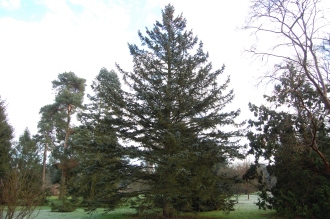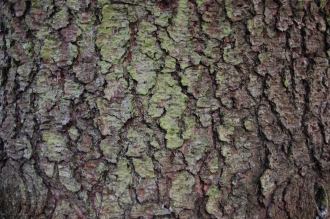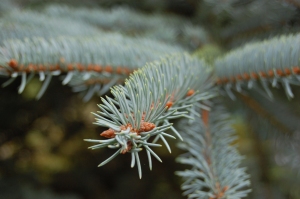Position: Full sun
Flowering period: Spring
Soil: Moist, well drained
Eventual Height: 15m
Eventual Spread: 5m
Hardiness: 3a, 3b, 4a, 4b, 5a, 5b, 6a, 6b, 7a, 7b, 8a, 8b
Family: Pinaceae
Picea pungens is an evergreen conifer tree with a conical habit. Its grey/ green needle like leaves are rigid, arranged singly all round the shoots and up to 3cm long. Its grey/ black bark is scaled. The monoecious flowers are ornamentally inconspicuous. Its fruit are narrow hanging cylindrical cones which are up to 10cm long and borne near the end of its shoots. These emerge a red/ violet, maturing to pale brown.
Picea pungens, commonly known as the Colorado Blue Spruce, Blue Spruce or Green Spruce is native to west United States. In its native habitat it grows in mountain valleys near streams where moisture levels are high. It is a plant that displays positive phototropism as well as negative gravitropism or geotropism in its stems as it reaches towards the light out of the seed.
The etymological root of the binomial name Picea is derived from the Lain Pix meaning ‘pitch or tar’ in reference to the trees resin. Pungens is derived from the Latin meaning ‘prick, puncture or sting’ in reference to the leaves.
The landscape architect may find Picea pungens useful as an attractive evergreen specimen parkland tree, due to its blue foliage and textured effect. It also makes an effective windbreak or visual screen. It will not tolerate urban pollution.
Ecologically, Picea pungens provides habitat and food for birds.
The Royal Horticultural Societie has awarded a number of varieties of Picea pungens its award of garden merit.
Picea pungens prefers moist humus rich soils. It will tolerate most soil pH although it prefers acid soils and dislikes chalky soils. It will also withstand short periods of drought (unusual for a Spruce).
Picea pungens requires little maintenance.








